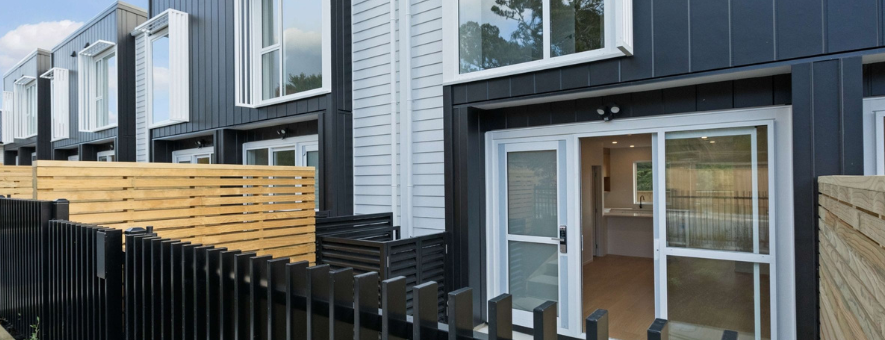With any residential or commercial building project, delays can cause a budget blowout. Surprisingly, poor logistics, particularly with weather tightening, can be a major cause of these delays. The question is – how can you reduce the risk of a cost and time blowout?
In this article, we explain how poor planning and project management result in unnecessary delays for building projects. We also share industry advice on how to avoid this and how to streamline your workflow.
Common causes for site delays
Construction projects are notorious for being delayed. While they can’t always be avoided, there are some ways to mitigate the fallout. Firstly, you need to be familiar with the common causes of delays:
- Council consenting delays
- Foundation delays
- Framing delays
- Supplier delays
- Roofing delays
- Labour shortages
- Lack of communication
- Project complexity
- Lack of confirmed specifications
When it comes to specifications, it’s important to confirm everything early on. This makes a significant difference to your project timeline and leads to a more streamlined process for everything else. For example, as soon as you finalise your window specifications, the UNO team can start manufacturing to deliver them on schedule.
The cost of delays on a building site
A lot of companies don’t consider the cost of delays and how much it impacts the project’s success. What they may not realise is, by the end of the project, these delays can amount to significant losses in profit.
The metric Cost of delay (CoD) represents the economic impact of a delay in project delivery. Essentially, it communicates the impact of “total expected value in relation to time”.
During the planning stages, the cost of running a construction site is usually underestimated. If you have a $10 million project running for 250 days, you could end up spending an additional $4,000 per day over your budget.
How to calculate the cost of delays
Follow these three simple steps to calculate the cost of a potential delay:
- Estimate the total revenue and % profit that a new project will generate.
- Estimate the number of days your team will need to complete the project.
- Divide the project profit by the project’s estimated time duration.
Example:
For a project value of $500,000, 20% estimated profit, and a build time of 90 days, the cost per day is $1,100.
Calculate the costs of delays using our free calculator
Where do the extra costs come from?
Every additional day on the building site eats into your total profit. The costs to factor in include both direct and indirect expenses.
Direct costs
The direct costs of construction projects include anything that is directly related to the project such as:
- Labour.
- Power and site services.
- Insurance.
- Equipment hire.
- Travel time.
- Waste management.
- Scaffolding.
These elements typically cost the same amount every day. For example, you can calculate the approximate cost of scaffolding hire here.
Indirect costs
Consequential losses such as reputational damage, loss of opportunity, and delay of revenue realisation will also affect the total profit. It is often these costs that get missed when assessing a project’s budget and potential delays:
- Time lost in the handover of the project to the client meaning income is realised at a later date.
- Company overheads.
- Inflation resulting in rising costs.
- Progress claims push out.
- Productivity inefficiencies.
- Liquidated damages.
How to avoid delays
While some delays are unavoidable, there are proactive steps you can take to minimise them.
Hire an experienced architect
One of the first steps is to find a reliable architect. The sooner you do this, the sooner you can finalise your plans and obtain council consent. It also ensures your project is compliant with the relevant Building Code requirements right from the start.
Confirm selections early on
One of the most important steps is to finalise the project specifications as early as possible. By confirming every selection and detail early in the process, you allow suppliers and subcontractors plenty of time to prepare and complete their respective tasks on schedule.
Create a detailed programme
Another way to streamline your project is by developing a clear, detailed project schedule. This outlines everything your project managers, suppliers, and subcontractors need to know, such as delivery times, workflows, and key deadlines. Ensure progress and any changes are well communicated with the subcontractors.
Hire reliable subcontractors
Your subcontractors play a major role in the efficiency and productivity of your project. By choosing reputable tradespeople to complete each task, you increase your chances of finishing the project on schedule. If you choose UNO to supply your windows and doors, we can recommend subcontractors we have collaborated with in the past.
Secure critical materials
Material delays, cost increases, and shortages are a common issue on many building sites so it pays to secure critical materials as early as possible. This is particularly true for materials that are in high demand or those that need completing for the rest of the project to progress. For example, securing your windows and doors supply will allow you to make your project weathertight and begin the internal fit-out.
Get an R-Value certificate
If you choose UNO Windows and Doors, we can supply you with an R-value certificate to streamline the building consent process. Following the recent increase in the R-value requirements, this can assist with your consent application.
Avoid complex designs
The more complex your design, the more time it will take to execute. With that in mind, one of the best ways to avoid delays is by opting for simple cladding junctions and sill detailing. The UNO specification team can help you identify the most suitable options for your project.
Remove the need for a site measure
UNO has a proven process to eliminate the requirement for a site measure before manufacturing the windows and doors, which enables the building to be made weathertight sooner and enables the project and other following trades to proceed sooner. Contact the UNO team to find out how to do this for your next project.
Why you should consider the cost of site delays
As Product Development Consultant Don Reinertsen said, “If you only quantify one thing, quantify the cost of delay”.
The benefits are more far-reaching than you may have considered
By understanding how much your planning and delays can impact your project profitability, you can take proactive steps to complete it quickly and efficiently. Consider the following benefits of delivering a project on or ahead of schedule:
- Increased revenue
- Increased opportunities
- Protected revenue
- Reduced total costs
- Avoid unnecessary costs
- Increase client satisfaction and referrals
- Other positive impacts such as simpler resource planning and subcontractor coordination, etc.
For more industry advice on how to streamline your building project, contact our expert team today.


.jpeg)

